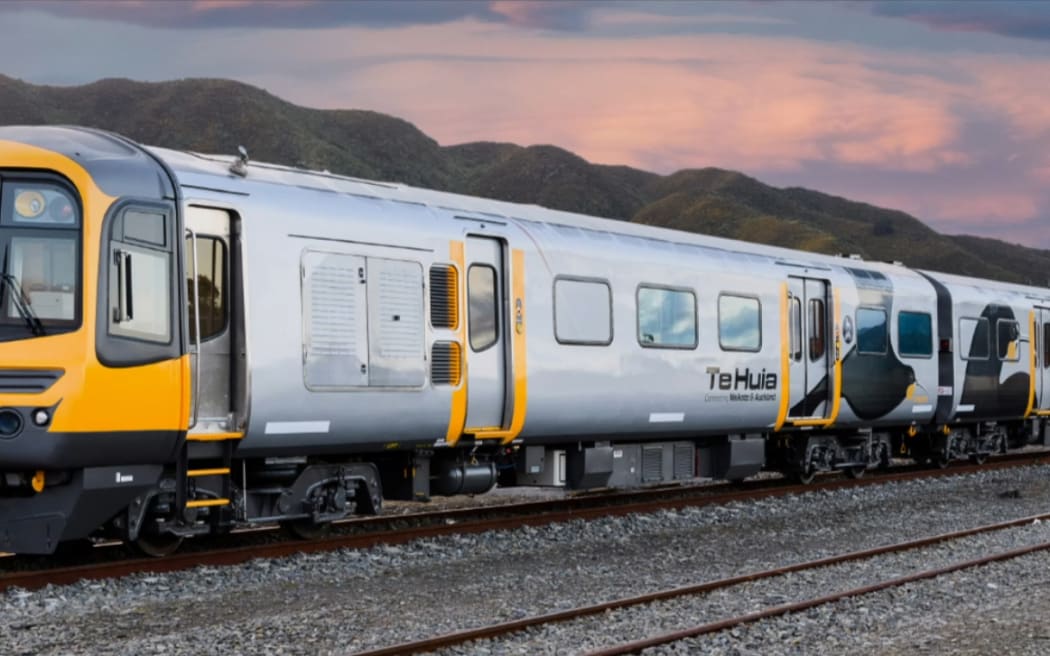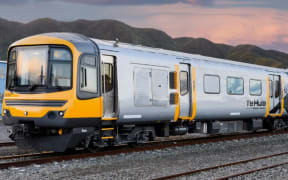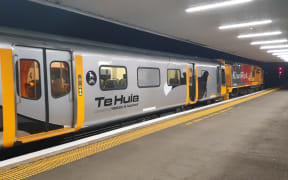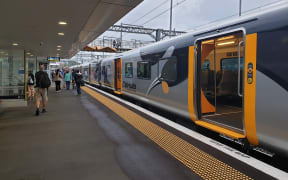
Photo: Supplied / Waikato Regional Council
A key document which will inform the future of the passenger train from Waikato to Auckland, Te Huia, has been released.
Te Huia has often been in the headlines, with initial low passenger numbers, safety issues barring it from entering Auckland city for a month, and arguments over how much it was costing.
Waikato Regional Council has prepared an Interim Performance Assessment of the passenger train service for presentation to the Transport Agency (NZTA) board this month.
At first glance, Te Huia consistently had more passengers travelling on an average day than what was aimed for.
On the average weekend day, it was getting more than double the passengers than were expected in 2018.
But there was a fat red line through the summary of targets.
In 2022, NZTA said instead of aiming for an average of 250 passengers travelling on a weekday, there should be 400.
Waikato regional councillor Angela Strange said those targets were set by NZTA staff, not the NZTA board.
"Our understanding is that the board approved the 2018 numbers. The amended targets did not actually go to the board so we are basing our figures on the initial targets," she said.
When the new targets were set, Waikato Regional Council said they would be difficult to meet without extra investment, which could have come from the budget which was not spent during Covid-19 shutdowns.
But NZTA said no.
Strange said it was a chicken-and-egg situation.
"We know we wanted more services to prove the case, they said 'you have to prove the case without extra services'."
NZTA multimodal integration national manager Deborah Hume said it was aware the updated targets were more challenging than the original business case and might be difficult to achieve.
However, in a statement she told RNZ: "Noting that the updated targets contained an element of stretch, it is NZTA's expectation that [Waikato Regional Council] make every endeavour to meet the amended targets".
"As the investor in the project, NZTA can amend their requirements."
Public Transport Users Association chairperson Niall Robertson said that was totally unfair.
"You can't do that. If you want to get some good productivity out of something you need to do the investment, and that's all there is to it," he said.
One investment Robertson suggested was a station in Pookeno, a town which had grown massively during the past few years.
"That's what everybody seems to have missed in this whole thing, is that this is an embryonic service."
With more stations would come more passengers and more farebox recovery, which referred to what percentage of the cost of travel comes from passengers instead of from government investment, he said.
Te Huia was not meeting its target in this area, but neither were most other public transport services in the country, Strange said.
Te Huia was set a farebox recovery target of 15 percent on Wednesday and just missed that in 2023 with 14 percent.
"However, nationally the average is 11 percent so in that regard Te Huia is actually outperforming other PT [public transport]," he said.
The NZTA board was due to consider Te Huia Interim Performance Assessment when it meets on 16 May.
After the board meeting, it would advise Waikato Regional Council of its decision with a public announcement in due course, an NZTA spokesperson said.
The agency was unable to comment on the options which will be considered by the board.





